What’s The Story, Muthur?
To the point, tabletop gaming
What happens when you mix The Old American West with Folkloric Horror? A First Look at Huckleberry
In the case of Huckleberry, I’m happy to report that the central mechanic is lush. To begin with, all your character attributes and skills are represented by a single step dice each (that is, d6, d8, d10, d12 or d20). To make a check, you roll two dice. One from the relevant attribute, and one from the relevant skill.
By JimmiWazEre
Opinionated tabletop gaming cowboy chap. Yeehaa.
TL;DR:
Huckleberry: A Wyrd West RPG blends the grit of the Old West with creeping folkloric horror. Players take on the role of Mavericks; wandering bounty hunters chasing bounties through a world tainted by the supernatural Wyrd. Its poker-inspired Ante system, luck driven Wyrd Die, and flexible core mechanic make it quick to learn and richly thematic.
Disclaimer
Now then! You know the drill by now, so here’s the disclosure: I’m not calling this a review because I haven’t played Huckleberry yet. I’ve definitely not received any financial incentive to write about it, but I did receive a copy of the PDF to share my thoughts on without any actual obligation to do so.
Additionally, I will be including links to both the Backerkit crowdfunding page for the physical edition and affiliate links where you can pick up the PDF, which scores me a small kickback at no extra cost to you.
So saddle up partner, and let’s ride.
What Is Huckleberry?
Just the Facts
| Type | TTRPG |
| Theme | Western, Horror |
| Players | 2-6 |
| Ages | Teens and up |
| Dev | Steven Alexander |
| Pages | 161 |
With the physical release launching on Backerkit on October 7th, 2025, Huckleberry: A Wyrd West RPG marks the debut tabletop release from Adventures in Lollygagging Publishing, written and designed by Steven Alexander with layout by Nathan D. Paoletta.
Originally conceived as a 1930s supernatural FBI investigation game inspired by Hellboy, Alexander’s design evolved after a session of Chris Spivey’s Haunted West revealed the perfect home for his mechanics - a dark frontier where the veil between worlds has thinned. Drawing influence from Powered by the Apocalypse’s 2d6 structure, Forbidden Lands’ approach to Traits and monsters, and the Blade Runner RPG’s step-die system, Huckleberry reimagines those ideas through a gritty Weird West lens.
The project was developed in collaboration with Adventures in Lollygagging, an indie Actual Play collective known for showcasing narrative-forward systems. According to Alexander, the partnership was a natural fit: “When it came time to be serious about self-publishing Huckleberry, it was an easy choice to publish under a label I already loved and wanted to contribute to.”
What’s it Trying to Do?
Here we come, reach for your gun and you better listen well my friend, you see; it's been slow, down below, aimed at you we're the cowboys from hell. Deed is done, again we've won, ain't talking no tall tales friend - 'cause; high noon, your doom, comin' for you - we're the: cowboys from hell.
--Pantera, Cowboys from Hell
I can’t help but have Pantera on as I write this all up. You see; Huckleberry is a weird west cowboy setting, where a corrupting maleficent force called “Wyrd” has been unleashed upon the “Fifth World”, introducing mutations to the local flora and fauna and everything between. In this setting, you play as “Mavericks”; bounty hunters, and the game play loop supports an episodic play style where each session is a new job as you and your team hunt for a new mark.
Alexander has clearly directed the game to be as player facing as possible; in a way that is reminiscent of Mork Borg, the players rolls for both attack and defence, and with a fixed target number of ten to aim for. Additionally, the GM (“Trailblazer“) is given tools to randomise events and situations in an effort to reduce GM cognitive load and keep the exciting decision making in the players hands.
Whilst the Mavericks certainly do not have the kind of longevity and power of a D&D 5e character, they aren’t going to typically be going down to one hit. Instead, the game encourages a cinematic play style, forgoing a lot of crunch in favour of fast play and building your legend as much as possible, before you inevitably hang your hat for the final time.
What Stands Out to Me?
Here’s a selection of elements that really call out to me as being particularly cool features of the game:
The Core Mechanic
I know I always say this, but I chuffin’ love a well-done core mechanic. Elegance and versatility are essential in establishing a ‘rules language’ that can be broadly applied to the whole game, and there’s no prizes from me for complexity for the sake of it.
In the case of Huckleberry, I’m happy to report that the central mechanic is lush. To begin with, all your character attributes (quick, grit, reckon, and spirit) and skills (Education, Brawl, Wrangling etc etc) are represented by a single step dice each (that is, d6, d8, d10 or d12). To make a check, you roll two dice. One from the relevant attribute, and one from the relevant skill.
For example, to roll a check for fighting in a pistol duel the Trailblazer would call for “quick” and “hand guns”, they might be d10, and d8 respectively. You’d roll those dice together and add up the total. If it’s greater than ten (the TN is always ten) - you succeed.
The Wyrd Die
Every Maverick has a Wyrd Die, starting at a d10, representing their luck, grit, and connection to the supernatural. It’s rolled alongside an Attribute when you’re reacting to danger, such as a save against bullets, curses, or rocks falling. In this way, it echoes the core mechanic above.
The interesting thing though is that the die’s size shifts up or down as you burn through Wyrd. For instance, you can shrink it by one step to reroll a check (pushing your luck) or spend four Aces (the game’s meta currency) to raise it again. When it’s high, Not only does the Maverick become more likely to make their saves, but they’ve also essentially got re-rolls in the bank too. When it’s low however, you’re courting disaster.
It’s a clever little tension gauge that links narrative risk to mechanical pressure.
The Ante System
Instead of rolling dice for enemies or hazards, the Trailblazer flips cards from a poker deck. The suit tells the Maverick which Attribute they must save with (Spades = Quick, Clubs = Grit, Diamonds = Reckon, Hearts = Spirit).
Number cards mean ordinary danger, and the monster’s ‘stat block’ gives you examples of how to describe this, but face cards twist the knife by dropping a Maverick’s Wyrd Die or escalating the threat. On the plus side, Aces and Jokers throw boons upon the Mavericks in the form of meta currency and Wyrd die promotions.
Now, because every monster in the game includes bespoke face card effects, the same deck produces wildly different encounters: a King of Hearts from a Brute might mean their attack becomes an AoE assault, while the same card from an Outlaw Thug unleashes a hail of bullets and a major injury.
I’m particularly fond of this idea, having written about GM conflict of interest and cognitive load before; any game system that takes some decisions out of the GMs hands when they need a rest are a welcome inclusion as far as I’m concerned.
Three Tiers of Environment Description
I’ve written about this idea before - that all environments should have three tiers of information. In this way GMs learn that environmental descriptions should be concise, and players should learn to engage with their surroundings in order to get the juiciest information.
I’m very happy to see that Huckleberry shares my views on this with it’s explicit inclusion of Open, Hidden, and Locked clues. The first layer is freely available information upon entering an area. The second tier is free also, but requires the player to specifically ask about a given tier one element. The final tier contains the most valuable information about, or within a known element and is consequently locked behind a dice roll of some kind.
Not only does this make for good game play, but it also results in a much easier and more concise experience for the GM taking pre-game notes for preparation.
Clint Eastwood would be proud of this, someone should tell him.
Potential Friction Points
Look, I really don’t want to be critical of this game as I think it’s pretty nifty and my mates have already added it to the ever growing list of games that I absolutely 100% have to run for them, but I’d not be doing you any favours if I wasn’t up front with you about some of the things I would have done differently, or that you should be very clear on before you buy. So I just gotta bite the bullet and crack on:
Rulebook Organisation
The rulebook references keywords and denotes them with a leading capital letter as if a proper noun. Unfortunately it then often doesn’t define these keywords until much later. Being a monotropic thinker, I find that quite a frustrating experience to sort of have to stick a pin in the thread I was currently following, and to then have to go blindly searching through the book to grab a definition, before returning to my original position and trying to carry on with the original chain of thought.
Two simple fixes here would do more than pull their weight - bolded keywords, and then page references immediately afterwards. I recently reviewed Ravaged by Storms, a Pirate Borg supplement by Golem Games, and it’s a great example of this philosophy.
Character Sheets
The PDF doesn’t include a character sheet. Obviously, it’s available for free online, but I find an annotated character sheet is a useful thing to have in a book as it tends to tell you a lot about a game system and the elements that are important. It would have been nice to include one for the sake of taking up an extra page at the back.
Built For Episodic Play
The Injury slot health system, limited advancement, and slow healing make Mavericks short lived by design. It’s brilliant for one shots and serial tales, but less so for your traditional epic D&D style sagas taking years.
This absolutely works for me, as I believe that the episodic style of running games is the best way to go anyway. It keeps the adventures action focused, helps fight against GM burnout, and prevents the players from meandering into one of those off sessions where they take two hours to go shopping for new swords.
Do You Want to Know More?
Hey what’s this, other people have thoughts about Huckleberry too? What sorcery is this?! Checkout these videos if you fancy going deeper down the rabbit hole:
Conclusion
So, I’m definitely adding Huckleberry to my shelf and I’m already thinking about ways to mine the Dark Tower books by Stephen King for adventure inspiration!
So you know - Huckleberry has just launched their crowdfunding Backerkit for the physical edition of the game (7th Oct 2025), and if you’ve been tempted by the devilish succubus of this first-look, might I suggest that sir/madam takes a sniff over at the Backerkit page and make any pledges within the first 48 hours of launch in order to receive an exclusive neoprene Huckleberry dice tray?
Hey, thanks for reading - you’re good people. If you’ve enjoyed this, it’d be great if you could share it on your socials - it really helps me out and costs you nothing! If you’re super into it and want to make sure you catch more of my content, subscribe to my free monthly Mailer of Many Things newsletter - it really makes a huge difference, and helps me keep this thing running! Hey, Hey also! Check out some of the other great posts I’ve written recently on the carousel below:
Catch you laters, alligators.
What Makes ‘Ravaged by Storms’ a Standout Pirate Borg Sandbox?
When Golem Productions reached out to invite me to showcase their adventure, I was happy to answer the call.
By JimmiWazEre
Opinionated tabletop gaming chap
TL:DR:
A storm-wracked sandbox, a furious feathered serpent, and a doomsday clock. Ravaged by Storms is Golem Productions’ newest Pirate Borg adventure — a 72-page mini-campaign where factions clash, hurricanes brew, and the Blight Revenant stirs. I really like it, it’s packed with GM tools like a Storm Generator and Ruin tables, but my first look also spotted a couple of quirks. Here’s what stood out to me.
Disclaimer
Similar to last week’s initial exploration of Emergent, I can’t call this a review. I’ve not played it yet you see, coupled with the fact that I’ve only been sent a WIP copy with some missing images etc and haven’t seen the final version.
As ever, I’ve not received a financial incentive to write nice things, but I am a backer of the Ravaged by Storms Kickstarter. When Golem Productions reached out to invite me to showcase their adventure, I was happy to answer the call. As part of this, I fed back a few suggested improvements to Golem Productions, and as such you’ll find me credited in the book :)
The upshot is that despite that very minor minor conflict of interest, you’re gonna be reading my honest first thoughts on an adventure which is mostly finished, and that I quite clearly can’t wait to get my hands on the finished product!
Oh, and whilst I’m disclaiming, this post contains minor spoilers covering the opening setup of the adventure. Cool? Swinging, lets get started.
What is Ravaged By Storms?
OK so, off the back of successful releases ‘The Way of the Worm’ and ‘The Scarlet Coral Kingdom’, brother - sister duo Alexander Jatscha-Zelt and Sabrina Jatscha (Golem Productions) have got yet another Pirate Borg adventure on the stove. ‘Ravaged by Storms’ (RbS), is currently in a live Kickstarter (well, live until 11th September 2025 anyway) and the campaign has already hit a fantastic 426 backers with over £15,000 pledged so far.
Jatscha-Zelt describes RbS as a “72-page mythic sandbox adventure module designed for Pirate Borg… rules-light, art-heavy, and fiercely OSR.“ and he’s pretty much nailed it.
For those unfamiliar with the idea; since it’s a sandbox adventure there’s no middle or end plotted out for you to awkwardly steer your players towards. What happens is totally in their hands. Player. Agency. My dudes.
There is however, a beginning:
In The Beginning, There Was A… (Minor Spoiler Alert, players skip to the next section!)
A millennia or so ago Mesoans settled in an archipelago in the Bahamas of the Dark Caribbean called the Death Wind Islands. With the help of their Coatl allies (serpentine demigods of wind and storm) they go on to build a glorious city housing all their wealth and knowledge.
Hundreds of years later, those Mesoan chaps are long gone - but their crumbling kingdom remains guarded by the last Coatl; Tzoketuapacatl (bless you!). It’s lucky he does too, because during a siege on the city an undead warrior was touched by a local Great Old One’s juicy venom and transformed into (our BBEG) the Blight Revenant, and this chap is hell bent on claiming the Whisperwind Conch.
If the Revenant ever manages to nab it from the city, the result could be extinction-level toxic hurricanes:
Fortunately, Tzoketuapacatl intervenes. Sealing the city, Revenant, and the Conch behind layers of impenetrable magical raging storm prisons. This is seemingly a cunning, nay, foolproof plan with but. One. Small. Flaw…
You see, it all slowly unravels if anyone gets into the city through the back door and yoinks a second magical McGuffin; the Wind Bone Key.
And, well, ‘sugarpuffs!’ Wouldn’t you just know it!? Flash forward to the Golden Age of Piracy and some swashbuckling scurvy dog has only gone and unwittingly done exactly that! Now there’s a six day timer ticking until the Blight Revenant gets his boney hands on the Conch, and to really stick the boot in - Tzoketuapacatl (who is understandably pretty dischuffed with this turn of events!) is going on a bit of a rampage against all the local factions trying to find the Wind Bone key and is tearing everything up in his path.
Unto this scene, enter stage left; our heroes.
Come on, that sounds pretty Saturday morning swashbuckling, right? I’m in.
What’s it trying to Do?
Be A Complete Mini Campaign
RbS is built to run as a 5-10 session adventure. Whilst you could probably run it straight out of the book, I would always recommend familiarising yourself with the content that you need to run an expected session, and making some notes prior to sitting down at the table.
It has a defined opening, a ticking doomsday clock, and enough locations, NPCs, and encounters to sustain a whole arc without having to do much more work than flesh out some of the things given to you should the players actions necessitate it.
Encourage Sandbox Play
There’s no fixed middle or end.
Instead, the module gives you procedures for faction activity, travel, and naval encounters so the world keeps moving around the PCs. The story isn’t pre-written and can only be understood as something that happened at your table in the past-tense, rather than something that the GM dictates will happen.
That’s really key to understanding how to use RbS: The players choose what to pursue, who to side with, and how to spend their six days before everything goes all Sharknado. The module does have a handful of potential ways the campaign might play out listed at the end, but the purpose here isn’t to say ‘pick one’, rather ‘this is just an inspirational small range of the limitless possible outcomes’.
Be Modular
After all that though, if a Sandbox campaign really isn’t your thing, well the module is also pretty damn modular to be honest. You could easily reach inside and tear out the stuff you like, such as the Lifeless City, or Drownmaids Rest to use as one shot adventures, and then adjust the player agency to taste.
What Stands Out To Me?
The Timer
The six day timer is doing two things, firstly, it’s setting expectations that this isn’t going to be a terribly long campaign arc (5-10 sessions), in fact this campaign is going to be perfect for my Pirate Borg campaign as a keyed location to drop in, and that’s how I’d suggest you use it too.
Secondly though, the timer is infusing the adventure with a sense of urgency which is something I find to be critical in keeping the players moving forwards and not getting bogged down trying to fulfil that ‘videogamey’ habit of exploring all paths and getting every achievement… and then consequently robbing the experience of all it’s tension.
The Roaming Coatl
Tzoketuapacatl is a cool monster, no doubt about it. But he serves a meta-function as a chaos generator and a GM safeguard.
I was thinking about this, we’re all human, and even in sandboxes GMs sometimes drift into predicting how things might play out. Once you start imagining outcomes, you risk steering players toward them. The Coatl prevents that.
By rolling for his actions and storms, and including information on how all the keyed locations change in his aftermath, the board state constantly shifts in unpredictable ways. It keeps the GM honest, preserves agency, and if you make the players feel it; I can imagine it injecting fresh tension each new game day.
The fact that Golem Productions has included this meta layer of thinking about how their module should be ran, and how they can make it easy for you to stick to sandbox principles really impressed me.
Sandbox Toolkit
OK, so yeah - the Coatl is very specific to RbS. But there are other gameplay tools that you can add to your broader Pirate Borg arsenal, and that makes it extra valuable:
There’s a Storm Generator that provides you with both descriptive prompts, but also translates these into specific player challenges, and suggests potential consequences for failure. Really useful for making weather more than simple flavour.
A Ruins Generator that lets you roll up some convincing locations for crawling, in case players take a left turn and find themselves somewhere that looks like it could use a dungeon.
Six new rituals from the ‘Squallbinding’ school to give extra magical options for PCs, all focused around the movement of air; wind, speaking, breathing etc.
Faction Play
Every group on the islands has its own agenda: there’s the pirate group; the Phantoms fracturing under Marceau, the West India Company scheming for control, the Bright Maiden’s mercurial ghost crew, the Coatl’s wrath, Peacatatl, and the Blight Revenant.
They’re all written to act and react alongside the PCs, with different motivations which creates shifting alliances and betrayals, again adding to the richness and variety of the campaign’s path at your table.
Nostalgia
It would simply be remiss of me not to mention that the art and descriptions are fantastic throughout. I really appreciated that elements of it grabbed me right in the childhood and transported me directly back to Monkey Island, meeting “Herman Toothrot” and tinkering about with monkeys and suspicious statues. Great stuff!
Potential Friction Points
Terminology Consistency
I especially like how the module uses a similar concise framework to my preferred method when it comes to giving area descriptions, however one of the things I fed back on relates to the consistency of the terminology in these areas. I should stress, mine was a preview copy with final changes yet to be made, but I noticed instances where I was uncertain if more than one distinct noun or proper name for a given element was simply artistic flair, or an indication that there were multiple similar elements.
For example, are “Maritime Beast,” “bone cage,” and “skeletal remains.” all referring to the same giant desiccated animal corpse on the beach, or are there three?
It’s fine to do this for many people, but for me personally it made reading comprehension just that little bit more of a challenge. Having to reread lines, over analysing, self doubt, that question - ‘have I missed something from elsewhere that explains this?’.
I’ll be happy to see this resolved in the final product, with the addition of the last few area maps which will clear this up nicely :)
Intentional Vagueness
Since this is a concise OSR adventure, there’s not pages and pages of lore a la WOTC. That’s not to say lore is absent, but rather that RbS is concise and gives you the minimum to make sure the GM is in control of the important facts. This means you’ll have to improvise if more detail is required.
This is going to work absolutely fine for me as all the main details have been covered and I just need to add some flesh to the bones here and there, but if you’re not comfortable with improvisation then it could be a sticking point for you, and it’s worth knowing, going in.
Navigation
There’s quite a lot of page flipping to be had in RbS, mainly in relation to how one of the broad cast of NPS relates to another regarding factional interplay. The nice thing is that you are specifically told where to flip to though, and you’re not just left to vaguely cast about looking for the relevant section.
I think I would have preferred to see some kind of nodal diagram showing all the different cast members, who they are connected to and how. That could have been up front on a single page and would have meant that I’m not regularly having to flip to elsewhere to get the full picture explained to me.
As it currently stands, this is probably the main reason why I said earlier that the module does still require you to read through and make notes, to make sure that you’re in total command of all the relevant information.
Do You Want To Know More?
Looks like Ravaged by Storms has made a bit of a splash, which is really nice to see.
Over at Thaumavoria, Dave has a nice interview up with Golem Productions, discussing RbS and various design choices.
And Rascal News even has a guest piece up discussing the Kickstarter!
There’s also an interview up on Youtube with Mom’s Open Table and the Kickstarter trailer offers a nice tease:
Conclusion
Obviously, it’s clear that I really like the look of Ravaged By Storms. I think it’s going to be an excellent option for inserting into my wider PB campaign. On top of that, you know I’m going to be lifting those GM tools straight out and putting them to use more broadly.
How about you though? Do you think it looks interesting? What would you like to see form a module like this? Answers in the comments below as always :)
Oh, before I forget - If you want to get in on the kickstarter, head over to the campaign in time for the final push before September 11th and grab yourself a slice of the action.
Hey, thanks for reading - you’re good people. If you’ve enjoyed this, it’d be great if you could share it on your socials - it really helps me out and costs you nothing! If you’re super into it and want to make sure you catch more of my content, subscribe to my free monthly Mailer of Many Things newsletter - it really makes a huge difference, and helps me keep this thing running!
Catch you laters, alligators.
What if Stranger Things, Buffy, X-Files, and X-Men Had a Baby? Emergent RPG: A First Look
In Emergent your protagonists have been touched by the interdimensional fallout that explodes into our world when the barrier between Earth and the ‘Transverge’ breaks down.
By JimmiWazEre
Opinionated tabletop gaming chap, who’s very tempted to rewatch Buffy now.
TL;DR:
Emergent is a superhero-horror RPG blending Stranger Things, Buffy, and X-Files vibes. Teens with powers fight monsters while juggling exams and social life. Cool dice mechanics, strong inclusivity, but potentially heavy prep and GM load. Looks promising if you enjoy structured, thematic play.
Disclaimer
Now then! Before we get into the weeds let’s be nice and clear with the disclosure: I don’t want to call this a review because I haven’t played Emergent yet. I’ve definitely not received any financial incentive to write about it, but I did receive a copy of the PDF to share my thoughts on without any actual obligation to do so.
I will be providing affiliate links though, in case Emergent seems like it might scratch your itch, and if you buy from those links I’ll get a small kickback at no additional cost to you.
I trust that we’re all savvy now? Let’s gooooo :)
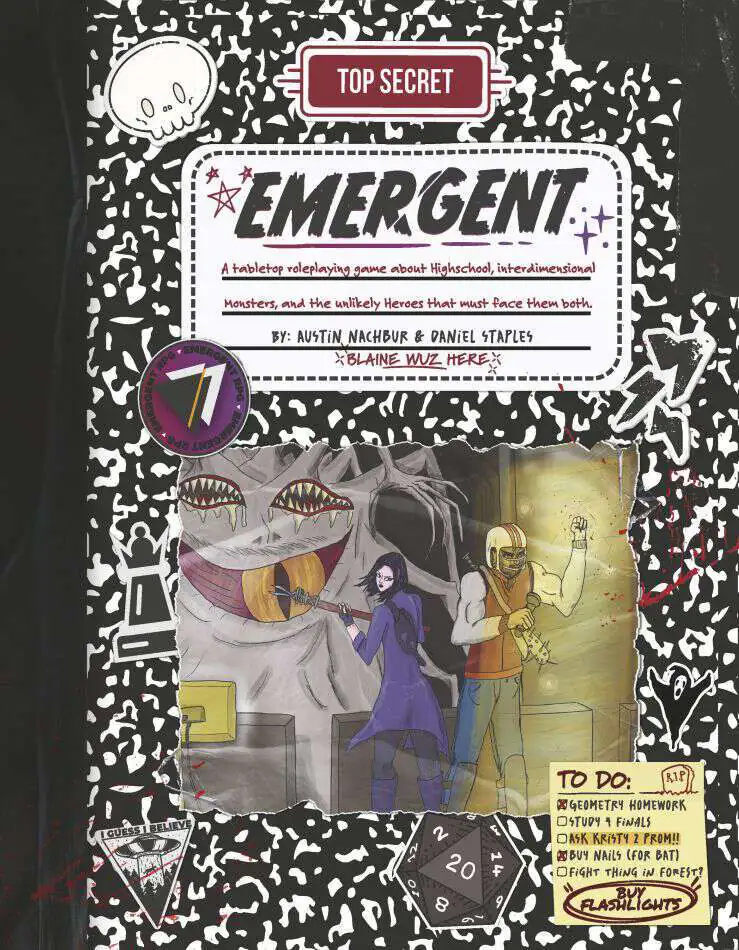
What Is Emergent?
Just The Facts
| Type | TTRPG |
| Theme | Superhero, horror |
| Players | 2-6 (Including GM) |
| Ages | Teens and up |
| Dev | Shield Brothers Games |
| Pages | 425 |
Successfully kickstarted to the tune of $6,256 in 2024, Emergent has been available digitally since March 2025 and represents the first foray into the TTRPG space for Shield Brothers Games design duo Daniel Staples and Austin Nachbur, with support from graphic designer; Blaine Greenway and a small squad of dedicated Q&A leads and sensitivity readers.
Staples and Nachbur began collaborating in college after they realised that they were both separately developing similar things, and decided to combine their projects into one, Emergent is the product of that collaboration - 425 pages all written in a diegetic style, as if the reader is inheriting a set of responsibilities, passed down from the old guard to the new.
What’s it Trying to Do?
Emergent wears its inspirations quite proudly. Stranger Things, X-Men, Supernatural, IT, Alan Wake… For me personally, I can see Buffy the Vampire Slayer and the X-Files embedded into it’s DNA too. That’s a lot to be blending together so let’s unpack it a bit:
It’s a superhero game, in Emergent your protagonists have been touched by the interdimensional fallout that explodes into our world when the barrier between Earth and the ‘Transverge’ breaks down. This singularity gifts you with minor powers that set you ahead of other humans, but it also draws the attention of ‘Division Omega’, the sinister shadow-government organisation responsible for all the transdimensional meddling in the first place.
It’s a horror game. Unknowable monstrosities call the Transverge home, and when they break through they’re angry, confused, and hungry. If you sit back and let Division Omega handle it then they’ll probably discover you too. That’s bad, you don’t want to be dissected and turned into the bioweapons of tomorrow, so you’ve got no choice but to defeat these Lovecraftian horrors yourself, all quiet-like. The only problem? They’re stronger than you and they’re getting stronger all the time.
It’s an investigation game! In order to get the edge, you’re gonna need to spend some time on recon, maybe investigating local sites of monster activity to look for clues, or heading to the library to check out the section on strange mythical beasts? It’s only when you understand the vulnerabilities of the monster that you should attempt a final confrontation. You’re going to need a plan.
“Pass Your Exams. Slay a Monster. Make it Home for Dinner”
It’s a coming of age game. Protagonists in Emergent are teenagers, typically in high school or college, learning to be adults, learning to accept themselves, learning how to survive in society. You’ve got to contend with the monsters whilst juggling all that stuff too, otherwise you risk becoming stressed out, socially ostracised, or failing your exams! I don’t want you to think this is just fluff though, this stuff is part of the core gameplay loop. Outside of school, work, and extracurricular activities you have limited time in your week, less so when your companions are also available. How are you going to make the most of it?
What Stands Out to Me?
Inclusivity
One thing that stands out straight away reading through Emergent is how seriously it takes inclusivity. The rulebook doesn’t shy away from pointing out ugly issues present in the real world (racism, sexism, homophobia) but it’s clear that whether these appear at your table is a matter of group consent.
Even in the sample cast of ‘Emergents’ (the game’s name for the superhero protagonists), inclusivity is matter-of-fact. Ash, for instance, is trans, but that detail is presented alongside her love of painting minis and running the school newspaper. It’s baked into the fabric of the game.
The result is a book where allyship feels foundational instead of performative.
The Core Mechanic
I love a cool core dice mechanic, and I’ve not seen this one before. To succeed in a check, you need to roll under your attribute + skill stats. The GM modifies the difficulty by setting the dice size (using the standard set of seven as made popular by D&D).
So, an easy task might use a d4 (more chance of rolling low, which is good) and a nigh on impossible task might be a d20. In this way, the game has two clear variables at play: firstly, how good your character is at a given skill - represented by their stats. Secondly, how difficult that particular expression of the skill is.
I’m also a big fan of the rulebook loudly making the point that skills checks should only be called for when failure carries risk. As opposed to calling for checks willy-nilly at every little thing that PCs might attempt to do.
Time & Scheduling
Emergent takes and tracks the passage of time very seriously. Gary Gygax would be proud!
Each day is broken into nine playable chunks called “sequences”. Three of these are for sleep (usually skip these), and three are reserved for school (sometimes skip these, unless there’s an interesting reason not to). That leaves you three sequences for responsibilities (like work and after school clubs), monster hunting and downtime.
At character creation all the players work together to build a shared calendar so that they can see when the group is free. Ideally, the PCs schedules overlap in places to allow for group monster hunting! However, the rules do encourage some deliberate mismatching to encourage the occasional solo scene too.
This strikes me as quite novel for a game to explicitly map out the PCs schedule like this. Most just hand wave it away, and it’d be interesting to see if this formal structuring impacts the natural flow of gameplay.
You might be asking ‘Why wouldn’t the PCs just ignore school and focus solely on the monster hunting?’ Well, for the same reason that Buffy the Vampire Slayer still went to class - exams, grades, and social obligations matter. Skipping them risks failure, expulsion, or drawing the wrong kind of attention.
Emergent goes a step further. If characters start blowing off school or other commitments, they accumulate Stress, which can escalate into Strain. In play, these translate into stat debuffs and penalty giving special rules - tangible consequences for ignoring the pressures of everyday life.
Superpower Themes
One of Emergent’s most eye-catching features is its catalogue of distinct superpowers. Each is presented as a theme, categorised into frontliner (tank), informant (scout), runner (skirmisher), support (healer), or controller (crowd control). Within those, abilities are unlocked as your character advances using a nodal system that connects abilities. You can only unlock a new node if it links to one you’ve already taken.
While these powers are written in a directive style similar to how D&D lays out spells, Emergent also stresses that abilities should be applied creatively at the GM’s discretion. The intent is to push players to think beyond the exact wording on their character sheet and use their powers imaginatively in the fiction.
Where things get particularly juicy is with Power Weaving. At higher levels, characters can choose to “weave” a second power into their existing one, broadening their toolkit in a way that’s reminiscent of multiclassing in D&D. A Blink user, for example, might weave Psyche to combine teleportation with telepathy.
Crafting
Crafting works through a recipe structure. Players gather components, match them to a blueprint, and assemble the item. Blueprints cover melee weapons, spray weapons, explosives, armour, and traps and even include the option for your players to MacGyver up anything that seems reasonable like the ruddy A-Team!
It’s good to see that crafting has consequences. Items can carry defects, and repairing damaged gear may become necessary. Because each Monster has unique weaknesses, the crafting stage is often where strategy takes shape. Players brainstorm together, share resources, and prepare tools that can turn an impossible fight into a survivable one.
Time is the limiting factor. Crafting takes up Sequences on the daily calendar, so every nail bat, molotov, or improvised trap represents time that could have been spent studying, resting, or keeping up with work.
Potential Friction Points
Possibly Heavy GM Mental Load
There’s a risk that the game undermines its otherwise elegant core mechanic. The GM doesn’t just pick the base difficulty die; they also decide when to apply advantage/disadvantage (shifting the die size), and when to apply situational modifiers (±1 to the skill). That’s three layers of judgement on every roll.
In my view it adds unnecessary cognitive load, and over a few hours of play I can imagine GMs starting to feel that weight. I’d houserule those away and replace them with a slight buff to player stats at creation.
Of course, your own mileage may vary depending on how comfortable you are juggling modifiers.
Emergent Gameplay?
Ironically for a game called Emergent, I wouldn’t say it proactively supports Emergent gameplay styles in the low-prep OSR sense, where outcomes arise unpredictably from light-touch systems or improv riffing from random prompts.
Instead, I can imagine game prep being quite involving, similar to a Call of Cthulhu session where the GM has to design the clues in advance so that they actually connect to a solvable answer. Additionally, the monster hunting loop follows a predictable pattern of investigate scenes, gather clues, discover weaknesses, prep, and then fight.
Call of Cthulhu is great, but I’ve only ever run it episodically and occasionally. That keeps the prep from becoming exhausting and stops players from familiarising themselves with the structure too much.
From my read through, Emergent feels similar. That’s not a bad thing necessarily, it just means the game leans into structured, thematic play where everything proceeds more or less to the GMs design, rather being the kind of game which relies on improvising and playing to find out.
Whether that’s your vibe is up to you to decide :)
Do You Want to Know More?
There’s not much information out there about Emergent yet, but Quinn from Shield Brothers Games has GM’d a couple of actual plays. You just go right on ahead and feel free to take a poke if you want to learn a bit more about how the game plays out.
Conclusion
Yeah so, Emergent seems like it should be pretty cool to me, and a couple of my usual players have already decided that it ticks their boxes and are eager to give it a go when time allows. If you want to pick up Emergent it’s available from Drive Thru RPG, and buying from my affiliate link will provide me with a little kickback at no additional expense to you.
Anyway, what do you think to it? Interested? Anything that puts you off? Let me know below the line.
Hey, thanks for reading - you’re good people. If you’ve enjoyed this, it’d be great if you could share it on your socials - it really helps me out and costs you nothing! If you’re super into it and want to make sure you catch more of my content, subscribe to my free monthly Mailer of Many Things newsletter - it really makes a huge difference, and helps me keep this thing running!
Catch you laters, alligators.








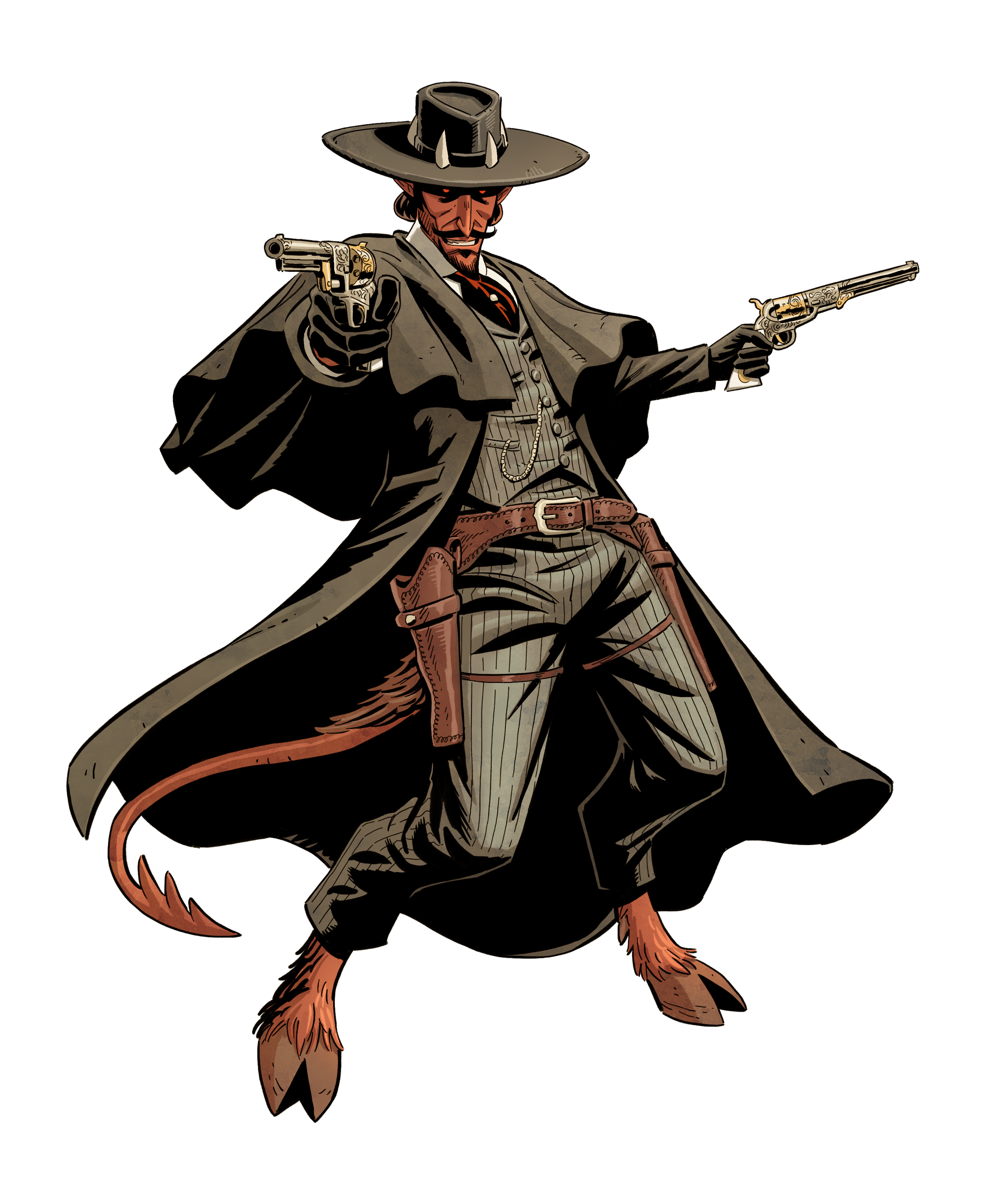
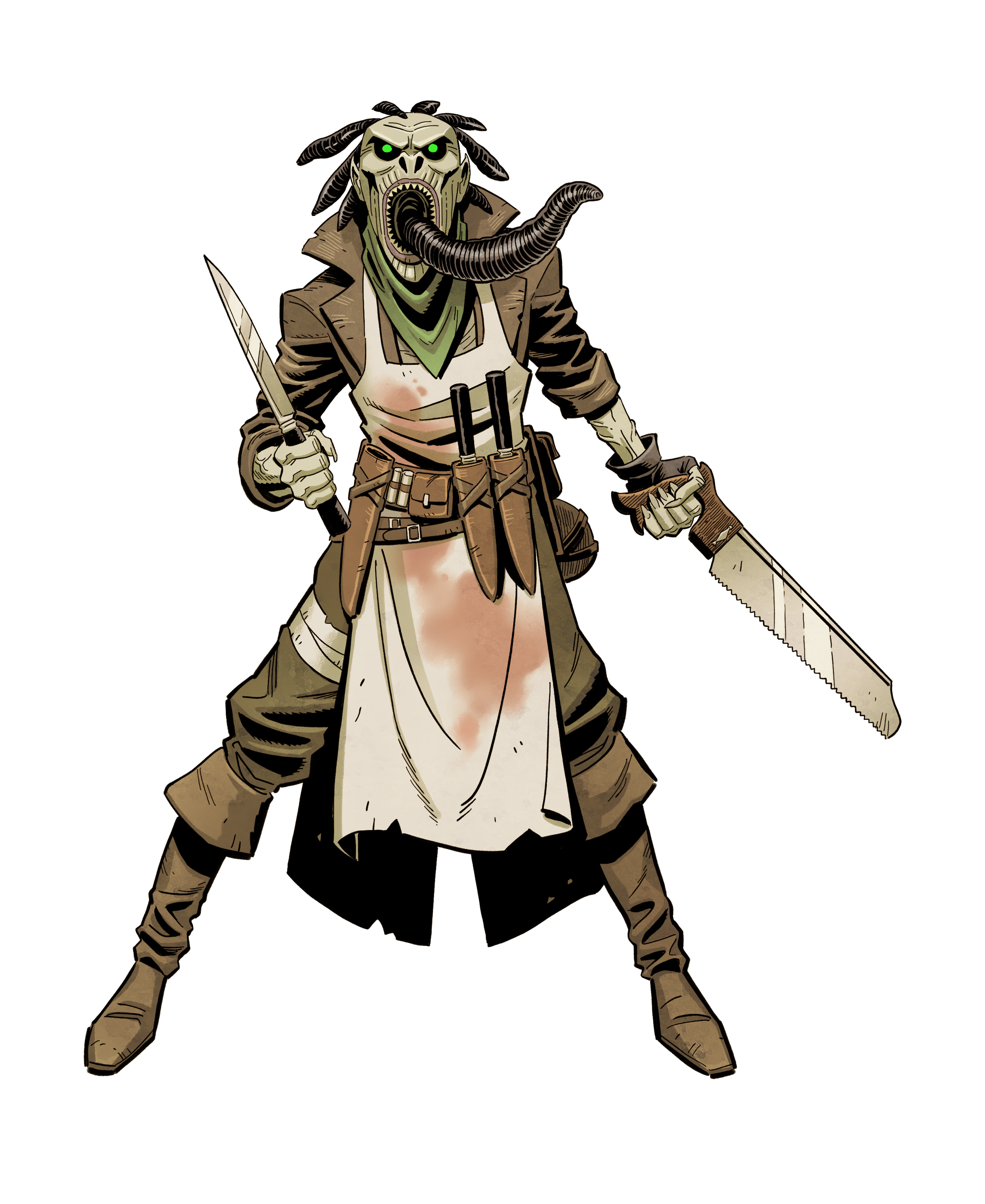








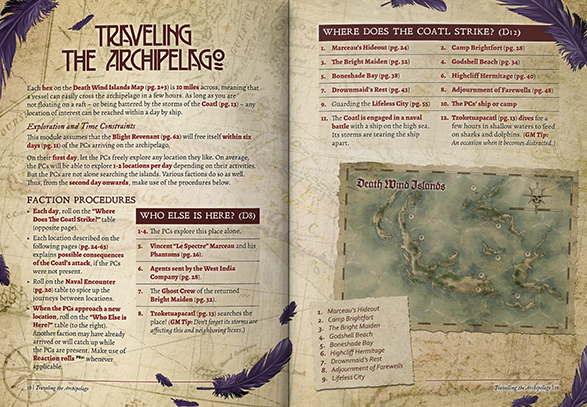

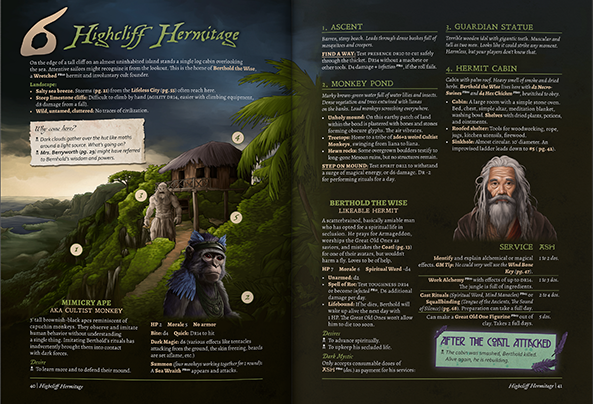


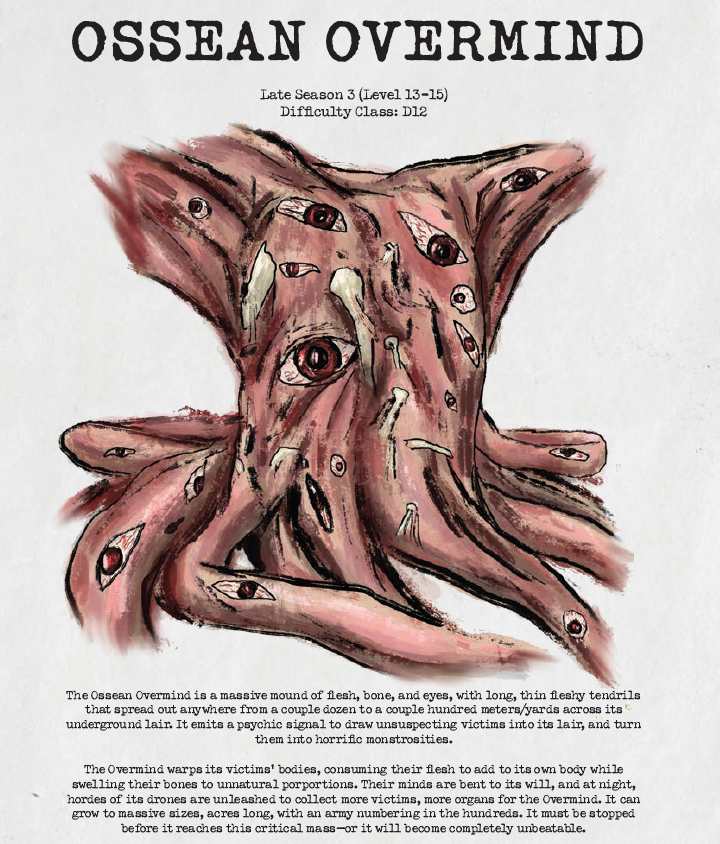
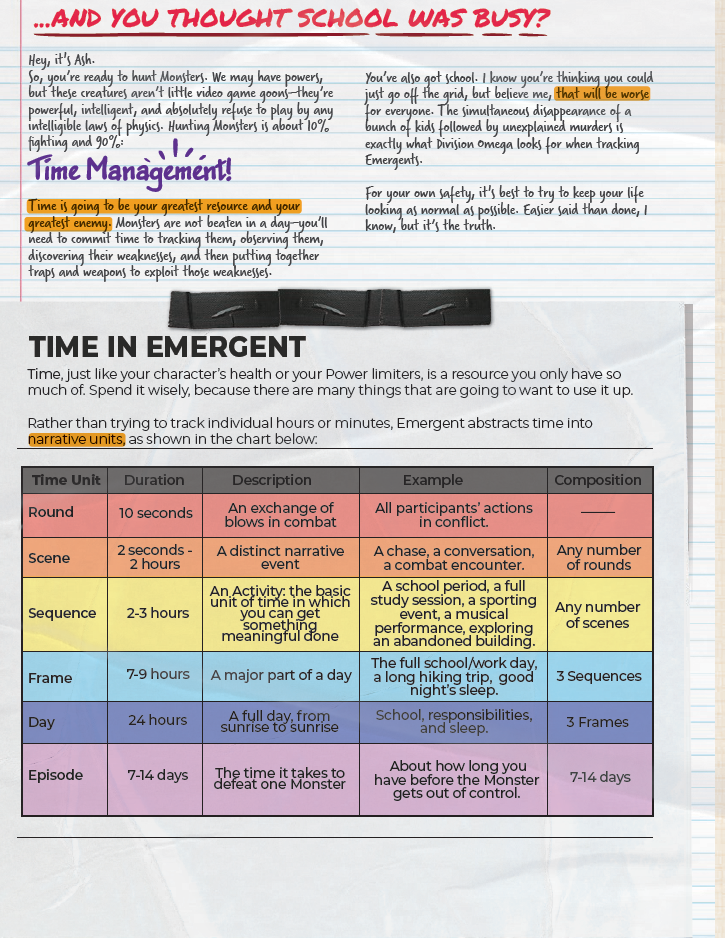


I know I'm gaining a bit of a reputation as someone who doesn't like 5e, but the truth of the matter is that I actually think that there's a very solid game there, it’s just hidden under layers of interdependent ill-considered bloat.